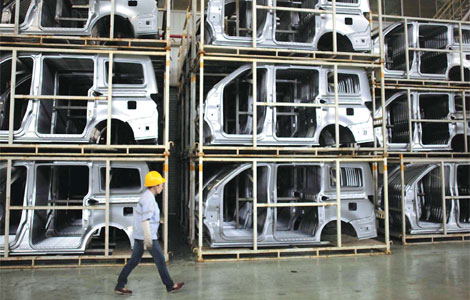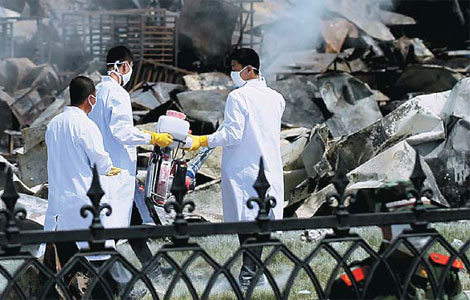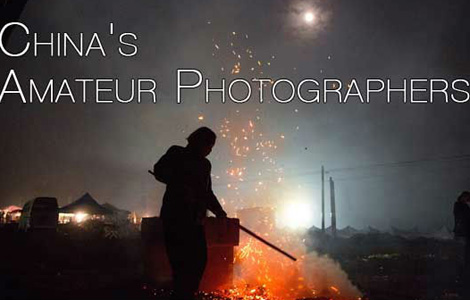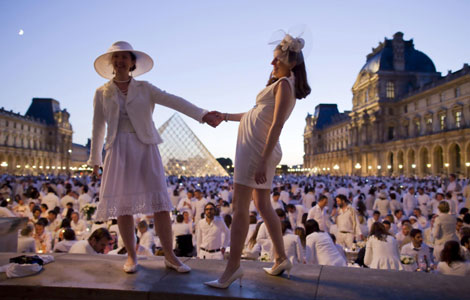Photos of missionaries provide a snapshot of history
Updated: 2013-06-14 17:01
By Huang Zhiling (chinadaily.com.cn)
|
|||||||||||
Lorraine Endicott felt the emotion swell as she saw a glimpse of yesteryear, and the deep appreciation for her grandfather's work among the people of Sichuan province, after visiting a museum showcasing 500 photos of Canadian missionaries in Sichuan province.
"I am happy that the Chinese people remember and honor my grandfather," said the 58-year-old Canadian who works with a magazine in New Glasgow, Nova Scotia, Canada.
Her grandfather, Games G. Endicott, (1898-1993) is in some of the 500 photos on display in the museum, which formally opened in Anren town, Dayi county, Sichuan, on Tuesday.
James Endicott, father of Games G. Endicott, reached Shanghai in 1893 after he was sent by the Methodist Church of Canada. He arrived in Chengdu in 1894 and commenced missionary work in Leshan, Sichuan, the next year.
Games G. Endicott was born in Leshan in 1898. Under the influence of his father, he became an intern pastor in the Methodist Church and this brought him into extensive contact with the people of Sichuan and he was able to share their experiences.
He led a medical team during the War of Resistance Against Japanese Aggression (1937-45).
He was against the Kuomintang starting the civil war and gave passionate speeches in Shaocheng Park in Chengdu at the risk of being assassinated by Kuomintang special agents.
In May 1949, he served as the chairman of the Candadian Peace Congress and played a leading role in the international "Ban the Bomb" movement. He revealed war crimes by going to Northeast China to investigate the biological warfare of the US.
After he passed away in 1993, his ashes were scattered in the Dadu River in Leshan.
From 1892 to 1949, groups of Canadian missionaries came to live and work in Sichuan, founding West China's first clinic and bringing modern dentistry to Sichuan and the first modern printing press. They set up the West China Union University combining both the liberal arts and science.
Traveling extensively in Sichuan, they promoted modern Western culture and education, and showed to the world the treasures of the province. They gave their children and grandchildren Chinese names.
"They took more than 3,000 photos of Sichuan and its capital Chengdu. Their descendants have provided more than 1,000 of these photos," said He Juntian, an information officer in Dayi.
In May 2010, some of the photos were put on display in a museum in Xinchang town, Dayi. Since then, 25,000 people have visited it.
"The county cooperated with the Canadian Old Photo Project Team to create a picture album ‘Chengdu, My Home' published in 2012 by the Sichuan Literature and Art Publishing House. The Canadian Embassy in China sent a letter of gratitude for its publication," He said.
After a recent renovation, the museum formally opened on Tuesday and the photos are divided into five sections.
The first depicts how Canadians reached Chengdu from Vancouver via Shanghai in the late 19th century as well as the life of more than 1,000 Canadians in Chengdu from the late 19th century to 1949.
The second is about how they started the Huaxi Hospital and West China Union University and the third involves photos of Chengdu, Dujiangyan and the upper reaches of the Minjiang River.
The fourth is about the students at the Canadian School and the fifth depicts how Chinese and Canadian volunteers spent eight years collecting the photos.
Today's Top News
Cameron proud, police ready as G8 approaches
Soil survey to examine extent of pollution
Overseas care a healthy alternative for wealthy
China gives approval to GM soybeans
EU seeks WTO ruling over steel measures
Nation's rise a common goal across Straits
Shenzhou X astronauts enter space module
Li urges further Ethiopian ties
Hot Topics
Lunar probe , China growth forecasts, Emission rules get tougher, China seen through 'colored lens', International board,
Editor's Picks

|

|

|

|

|

|





